The Hyundai Kona N Ensures the Hot Hatch Will Survive
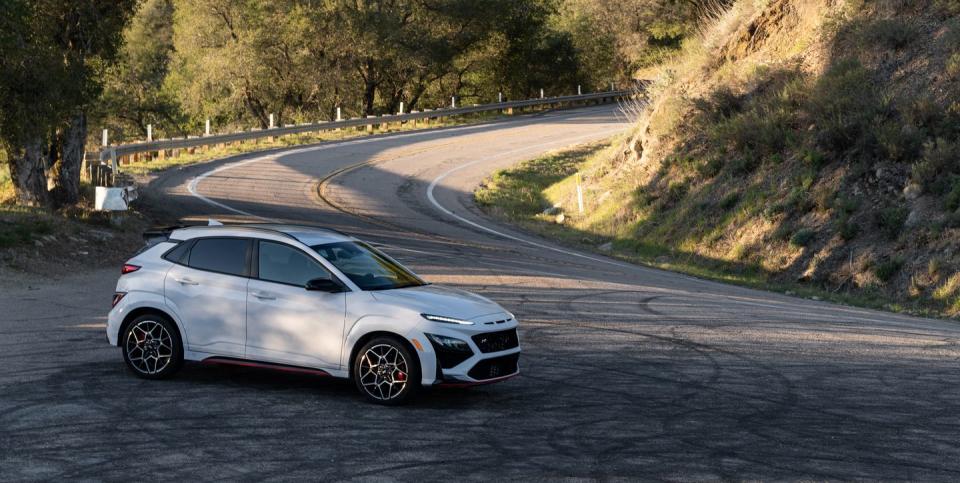
Evolution is the rule. Neither organism nor product can avoid that truth. Emerging threats, environmental changes, and extinction events redefine what it means to be fit for survival. And in the midst of this industry’s latest extinction, the Hyundai Kona N is the first of the new order.
That is not to say that the fate of the existing order has already been sealed. No, the beauty of the diverging paths of evolution is that multiple adaptations can ensure survival, increasing diversity. What cannot be denied is that the current hot hatch formula is under pressure.
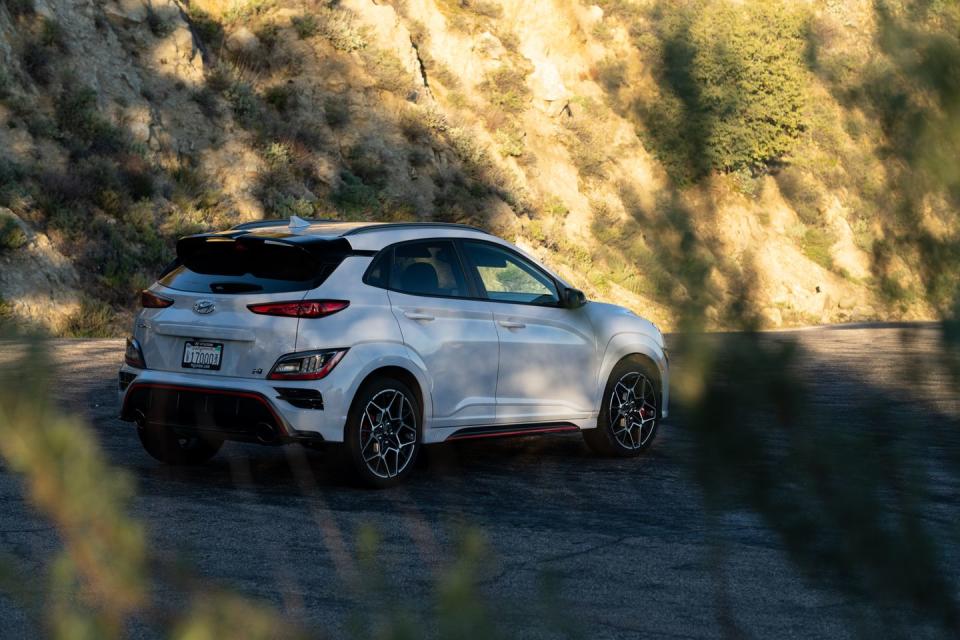
Surprisingly, this pressure doesn’t stem from the creeping evil of blandness and conformity. In contrast, the hot part of the hot hatch market is more desirable than ever. Take stock and you’ll find the American consumer more spoiled for cheap fun choices than any other time in the last 20 years, with the traditional GTI, Golf R, Veloster N, Civic Type R, and Mini Cooper being sold alongside similarly-executed sedans like the Elantra N, Civic Si, and Subaru WRX. The desire for accessible fun is so undeniable that even Toyota is entering the game, offering an all-wheel-drive Corolla with LSDs at both ends and a homologation 3-cylinder powertrain under its hood. Hot damn.
Performance variants are enjoying a resurgence. It’s the “hatch” part of the term that’s facing its ice age. Take the three sedans listed above from Hyundai, Subaru, and Honda. Both the WRX and the Civic Si used to offer hatchback variants, but neither can justify it now. Hyundai used to have a four-door Elantra hatch that could have become a GTI competitor, but the company has left that to the goofy Veloster. The Fiesta ST and Focus ST are gone, too, not for failure of the ST brand but because the Blue Oval no longer considers the compact sedan and hatch market viable. Small cars are a dying order, and without them, we’ll have nothing to base our traditional hot hatches and sedans on.
The category of vehicle supplanting the compact hatch is the subcompact SUV, a group that tends to be less refined, less engaging, less efficient, and more expensive than the class it is replacing. Here another evolutionary concept provides some clarity. Evolution does not bias toward the survival of the fittest overall, but the fittest for that environment. In a market that considers an SUV with all-wheel-drive the ultimate form of human transportation, even a weak version of that recipe is better than a well-rounded sedan.
Of the infantile group, all only a generation or two old, the Hyundai Kona is among the most promising. The styling is less awkward than most of these monstrosities, which look like the first attempts by man to walk upright. The interior is quite nice, the ride quality is good, and it doesn’t feel hollow.
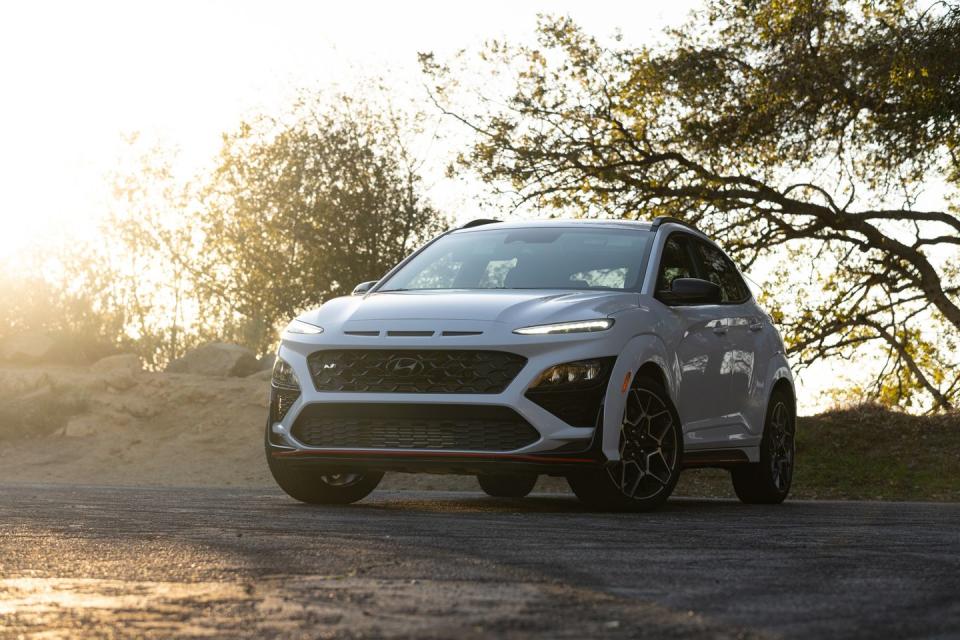
Yet it is undeniably worse in most respects than the best of the compact sedan class, outmatched in almost every regard by a Civic or Elantra save for cargo space and available all-wheel drive. It should come as no surprise, then, that the Hyundai Kona N is clearly the worst N product yet. In testament to the out-of-nowhere prowess of the Veloster and Elantra, though, even the worst N is exceptional.
The formula is familiar. The 2.0-liter turbocharged inline-four from the Veloster and Elantra N makes 276 hp with the same eager delivery, offering up 289 lb-ft of torque to the front wheels of the sneaker-shaped SUV. Shifting is handled by an eight-speed dual-clutch automatic, the same snappy one offered on the Veloster and Kona, with the same kind of adjustable dampers and drive modes that give the N cars such dual-use charm.
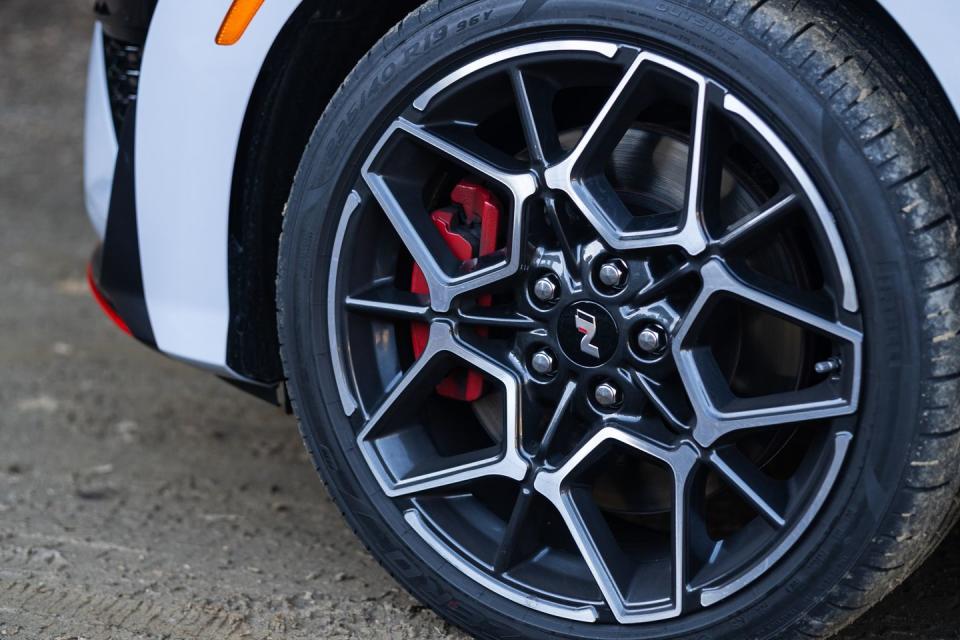
Like other DCT N models, the Kona has an “NGS” button right on the steering wheel. Pressing it instantly drops the car to the lowest viable gear, stiffens the suspension, quickens the throttle response, and weights up the steering, each adjustable system leaping to its most aggressive position for 20 seconds while the engine summons a temporary 10-hp power boost. As absurd as the acronym for “N Grin Shift” is, the one-touch solution for on-ramp tomfoolery is a stroke of brilliance. It’s a constant reminder that, in a car like this, a chance to have some fun should never be wasted.
The chassis delivers on that mission. Simply put, Hyundai’s N division has both the talent and the corporate freedom to create phenomenal driver’s cars. The engineering team, led during the Kona N’s development by the renowned and now-retired Albert Biermann, not only knows exactly how to tune a vehicle but is trusted enough to execute its vision without having to incorporate bad ideas or silly tinsel handed down from marketing.
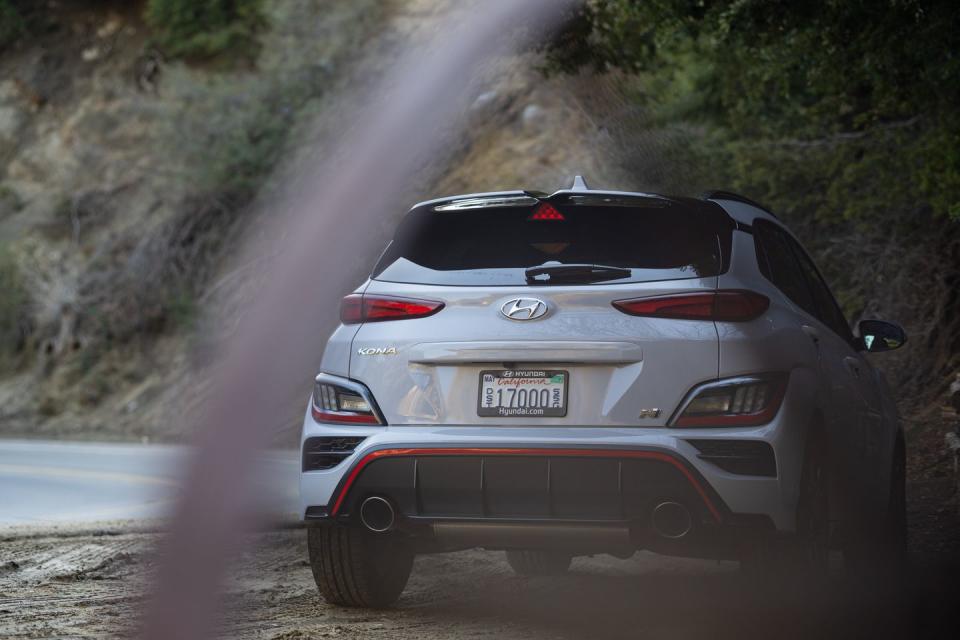
So while the Kona N may not have the all-wheel-drive, spaceship computers, or unstoppable power of, say, a Golf R, it is more confidence-inspiring in corners and more charming on the straights. The simplicity of a front-wheel-drive car with a mechanical limited-slip differential makes the Kona both easy to predict and rewarding to learn on. Carry too much speed and the Kona N will punish you with light understeer, urging you to be smarter and more precise. Lift off abruptly and it’ll start to slide, assuming stability control is off. This means big speed won’t come as easily as it does in a lot of modern performance cars, yet get it right and you’re not just rewarded with blistering pace but with the rare satisfaction of knowing you got the car there on your own.
It’s that reward that sets the current crop of Hyundais apart. They aren’t just fun on the primal level with their burbly exhausts and lateral Gs, they’re rewarding tools that can create better drivers. To get the most out of the Kona you’ll have to shift yourself to keep the rowdy powertrain spooled up, you’ll have to plan your corner approach thoughtfully, and you’ll have to restrain your right foot if you don’t want to overwhelm the front tires. You’ll have to work.
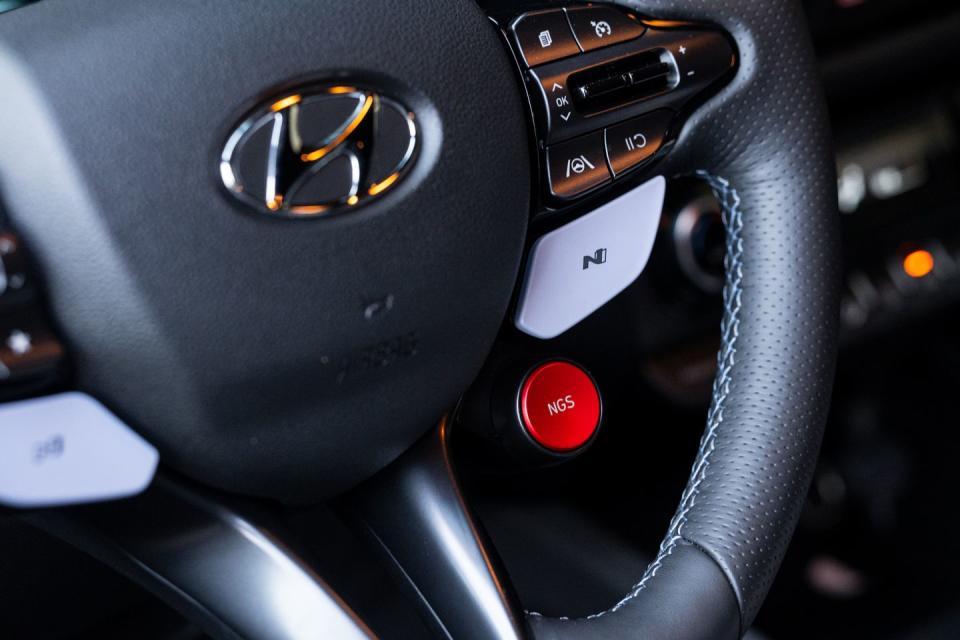
If you are willing to work, the Kona is more than happy to meet you halfway. The brakes handled plenty of abuse on a deeply technical mountain road with 25-mph maximum corner speeds, the the A/C blew cold the entire time, and the chassis never surprised over endless bumps and crests in the road. When it was time to head home, I put the Kona back in Normal mode and settled in for a comfortable, relaxed ride down the interstate. Aside from a lane-keeping system that’s way too eager and a bit of road noise, you’d hardly know that it was supposed to be an aggressive car.
As a package, I think I prefer the Kona N to even the Volkswagen GTI, the definitive hot hatch. It’s hard to say with certainty, only because what I’d actually buy for the money is an Elantra N. That car is even more composed, more charming, and not much less practical than the Kona. More importantly, it has far more talkative steering. The Kona isn’t bad by modern standards, but the Veloster and Elantra are exceptional. Those cars are also members of another dying breed, models that offer manual transmissions. If you understand the mission of the hot hatch and its beauty, you should understand why that’s a near-essential component. Get it while you can.
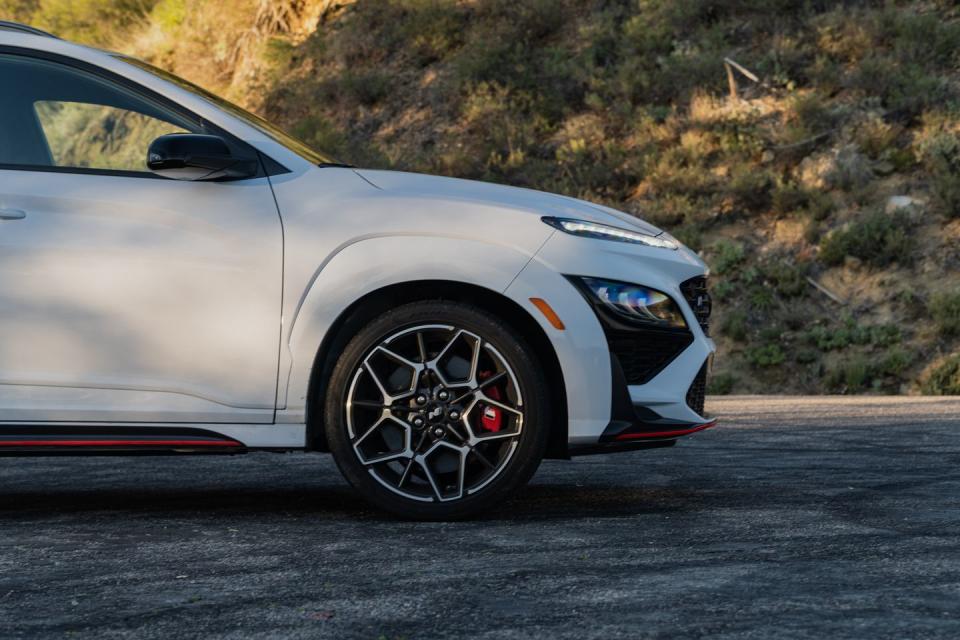
There’s no way to know if those other cars will survive this next period. Surely attainable performance will live on, but the simple perfection of a lightweight compact car with a smidge of spice in its engine bay and a manual in its midsection may not. If the Kona N is an indication of what will replace it, though, I think we’re going to be alright.
You Might Also Like

 Yahoo Autos
Yahoo Autos 